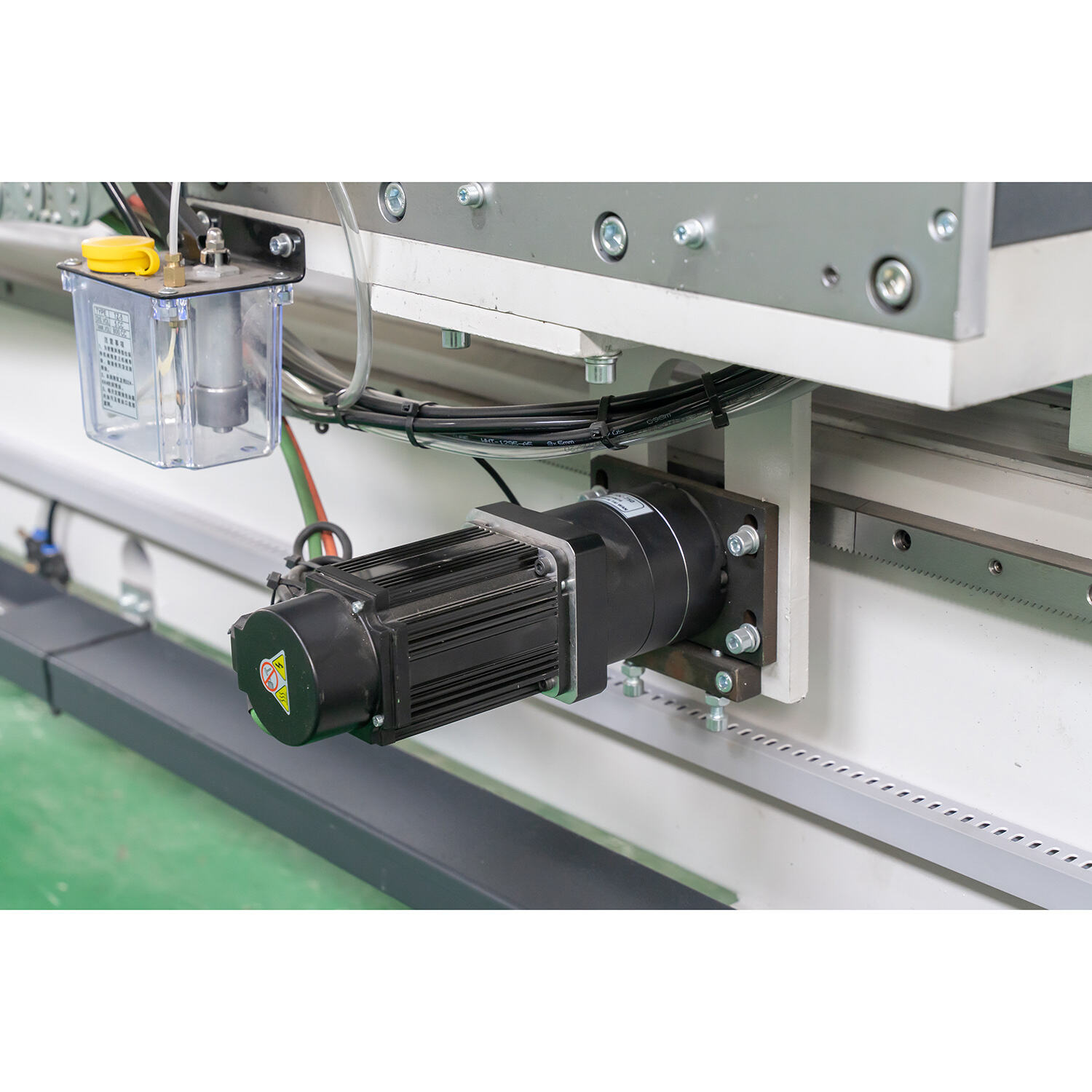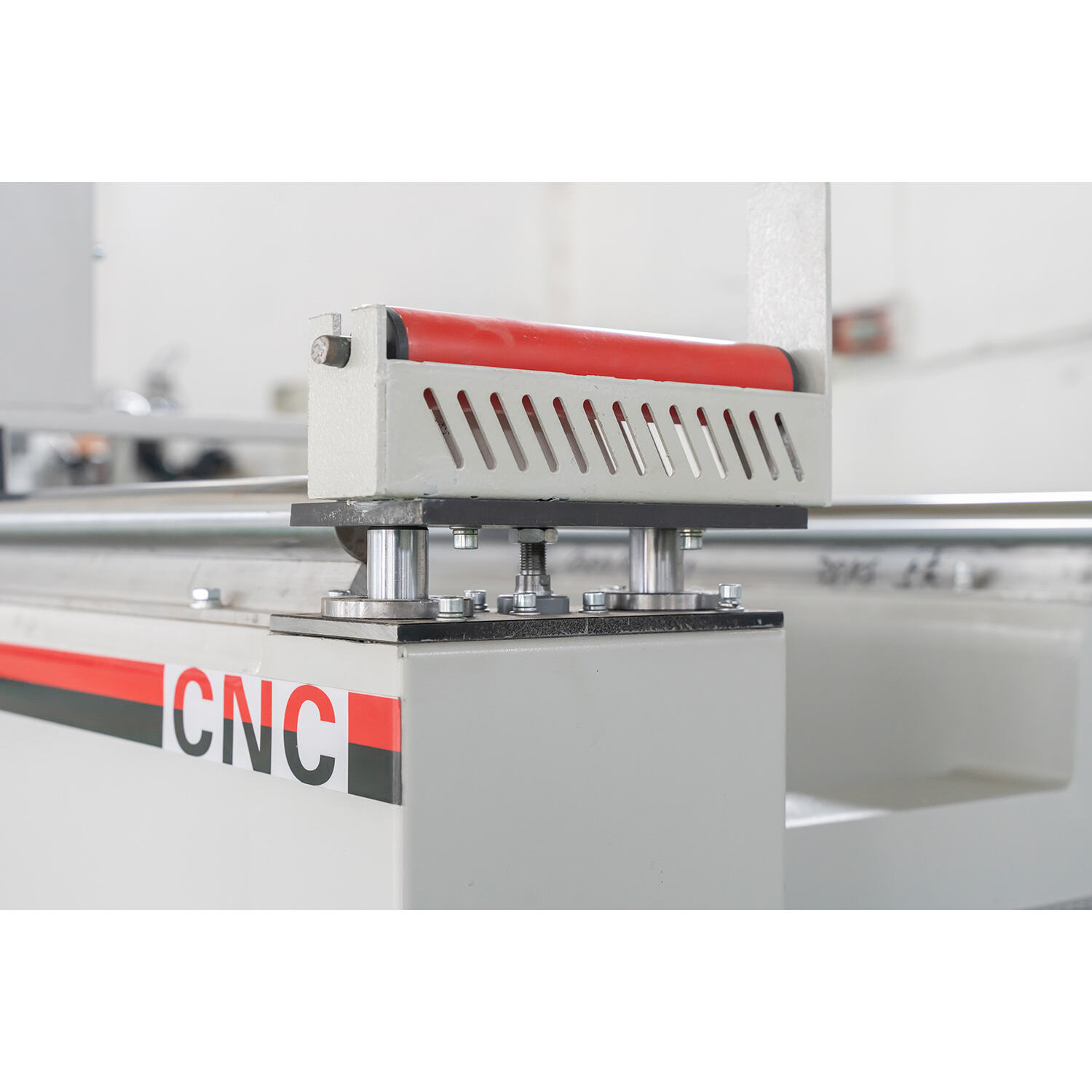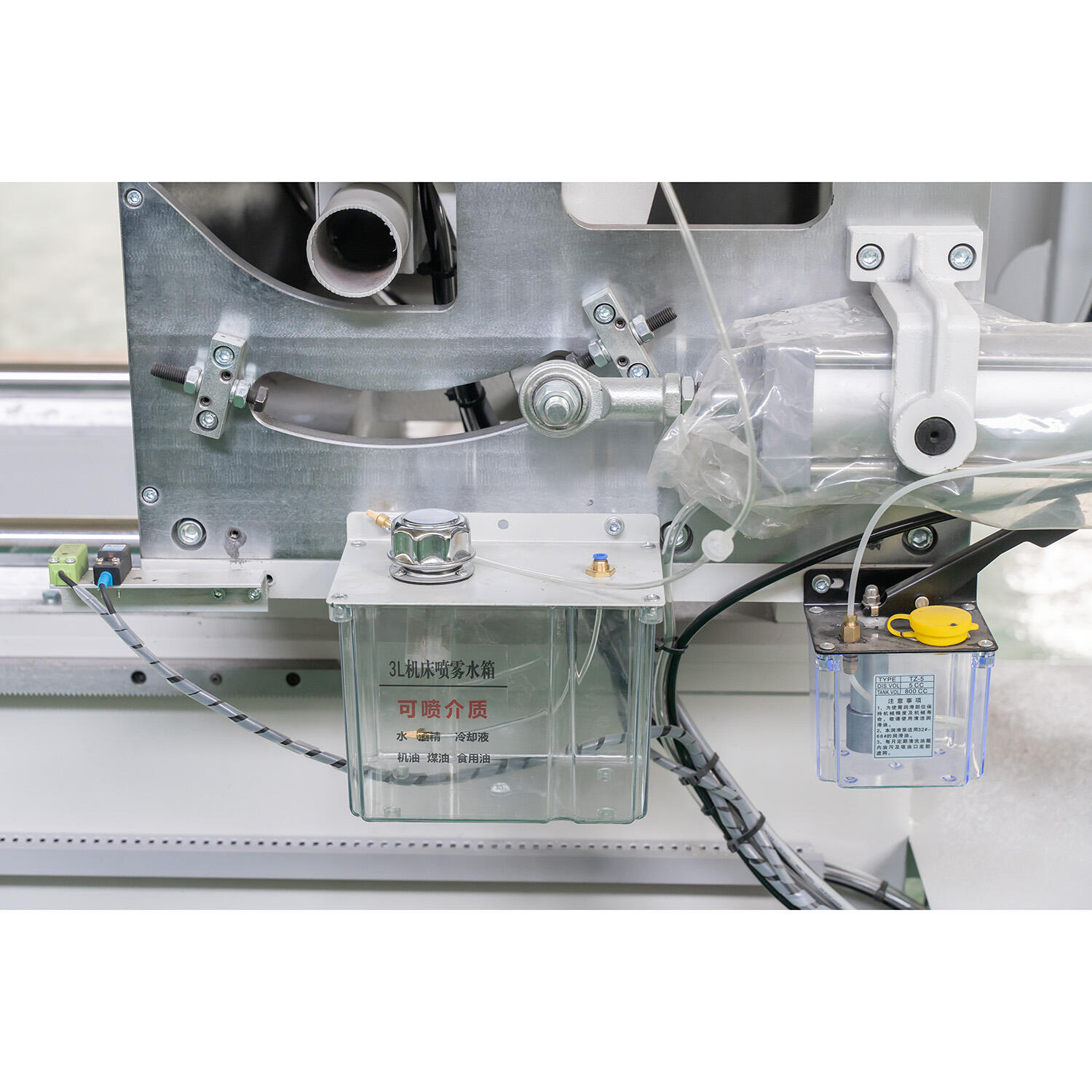Why Certifications Matter for PVC Profile Cutting Machine Manufacturers
The critical role of certifications in the PVC profile cutting machine industry
For manufacturers making PVC profile cutting machines, certifications are basically must-haves these days. When companies get third party verification like ISO 9001 certification, it shows their production meets those global quality standards everyone talks about. Factories with this kind of certification actually produce parts with 27% fewer size differences than those without proper certification according to Machinery Standards Quarterly last year. The certification process makes sure materials can be tracked back through the supply chain and keeps equipment properly calibrated. These things matter a lot when running CNC cutting operations because even small mistakes cost real money down the line.
How international standards ensure safety, quality, and regulatory compliance
International certifications address three operational pillars:
- Safety Compliance: CE-marked machines reduce electrical hazard risks by 41% through mandatory insulation testing (EU Machinery Directive 2024)
- Quality Consistency: ISO 9001-certified production floors achieve 92% first-pass yield rates in PVC mitering tasks
- Legal Protection: EN 12004-compliant systems automatically satisfy EU import regulations, avoiding customs rejections
Building customer trust and expanding market access through certification
According to a recent 2024 survey looking at what construction contractors actually do when purchasing equipment, around three out of four companies stick strictly to certified PVC cutting machines for their commercial work. They really care about seeing those ISO and CE marks on supplier products before making a purchase decision. For manufacturers who have gotten that IEC 60204-1 electrical safety certification, things get much easier when exporting to ASEAN countries. The Global Trade Efficiency Report from last year showed these certified makers got approval for exports about 63 percent quicker than those without proper paperwork. Basically, these certifications act like quality stamps that open doors to tougher markets where standards matter most, including places that make high spec polymers needed in aerospace applications.
ISO 9001: Quality Management Benchmark for PVC Cutting Machine Production

Overview of ISO 9001 and Its Application in Plastic Processing Machinery Manufacturing
ISO 9001 is basically the gold standard when it comes to quality management systems around the world, with somewhere around a million companies holding these certifications at any given time. For manufacturers making PVC profile cutting machines, sticking to ISO 9001:2015 requirements means putting in place proper process documentation, setting up ways to keep improving operations, and focusing on what customers actually need from their products. Some research done last year by the International Association of Plastic Manufacturers showed something interesting too. They found that shops with ISO certification managed to cut down machining tolerances by about 23 percent compared to those without certification. This was largely because they had better quality records and trained their workers properly on the shop floor.
Benefits of ISO 9001 for Consistency, Precision, and Process Optimization
Manufacturers who hold ISO 9001 certification can typically hit around ±0.1mm repeatability when cutting PVC profiles. They do this by keeping a close eye on spindle speeds and feed rates in real time, sticking to regular calibration schedules for all CNC router parts, and using those smart feedback loops that match what's actually being produced against what customers asked for. These quality control measures help keep material waste under 2% most of the time, which is pretty impressive given the strict requirements of EN 14024 standards for making window and door profiles. Factories that follow these protocols not only save money on wasted materials but also consistently deliver products that meet exact specifications from their clients.
Case Study: Certified Factory Achieving Higher Reliability in PVC Profile Cutting Machine Output
A Chinese manufacturer demonstrated the tangible benefits of ISO 9001 implementation through a 14-month transformation project:
| Metric | Pre-Certification | Post-Certification | Improvement |
|---|---|---|---|
| Machine Downtime | 18% | 6% | 67% Reduction |
| Profile Dimensional Accuracy | ±0.5mm | ±0.2mm | 60% Improvement |
| Customer Returns | 8.2% | 1.9% | 77% Decline |
This operational transformation was achieved through risk-based process mapping and cross-departmental quality circles, validating ISO 9001's effectiveness in industrial machinery production. Third-party audits confirmed sustained improvements for 36+ months post-certification.
CE Marking and Compliance with EU Machinery Safety Directives
Understanding CE Marking Requirements for PVC Profile Cutting Machine Equipment
The CE mark is required by law for all PVC profile cutting machines entering the European Economic Area market, showing they follow the EU Machinery Directive from 2006 (number 42/EC). Getting this certification means these machines actually meet strict requirements around safety, worker health protection, and environmental impact. The regulations specifically address things like reducing risks from moving components, ensuring electrical systems are safe, and keeping noise levels within acceptable limits. Companies making these machines need to put together quite a bit of paperwork too. Risk assessments, test reports, and official statements about conformity are all part of the package. Take CNC cutting systems for instance. These need thorough checks on blade guard effectiveness and how well emergency stops work when activated. Some manufacturers find this whole process pretty time consuming but necessary for staying compliant with European regulations.
Key Technical Documentation and Risk Assessment Steps for CE Compliance
Achieving CE compliance involves methodical hazard identification and mitigation. Manufacturers follow a 5-step process:
- Hazard Analysis: Mapping potential risks (e.g., mechanical pinch points).
- Design Modifications: Adding safety interlocks or protective housings.
- Technical File Creation: Compiling assembly diagrams and test reports.
- Conformity Assessment: Partnering with notified bodies for high-risk components.
- Declaration of Conformity: Legally binding affirmation of standards adherence.
Firms prioritizing these steps reduce non-compliance penalties by 78% compared to uncertified peers (EU Safety Report 2023).
Self-Declaration vs. Third-Party Verification: Ensuring Credible CE Certification
Self declaration works fine for many things under the Machinery Directive, but when dealing with machines that have high voltage parts or automatic feeding systems, getting someone else to check things out becomes really important. These official checking organizations go through all those technical documents and actually visit sites to make sure everything matches up properly. They help clear up any gray areas where safety rules might not be completely clear. Looking at numbers from last year shows something interesting too. About 92 percent of PVC cutting machines that had proper CE certification made it through EU border checks without problems. Compare that to only around half (54%) of the ones that were just declared compliant by their makers themselves.
Alignment with Broader Safety Frameworks Like OSHA and ANSI
CE compliance synergizes with global standards:
- OSHA: CE's emergency stop requirements align with OSHA's 29 CFR 1910.212 for machine guarding.
-
ANSI B11.21: CE-certified dust extraction systems often exceed ANSI's particulate control benchmarks.
Manufacturers adopting unified safety frameworks reduce retooling costs by 40% when exporting to multiple markets (Global Trade Review 2023).
Electrical and Operational Safety: IEC, ANSI, and OSHA Standards
IEC Standards for Electrical Safety in CNC-Based PVC Profile Cutting Machines
The International Electrotechnical Commission, or IEC as it's commonly called, plays a big role in setting safety rules for electrical equipment used in factories, especially those fancy CNC machines that cut PVC profiles. Take standard IEC 60204-1 for instance. This one basically tells manufacturers how to build their electrical systems so they don't blow up when something goes wrong with short circuits, overloaded components, or bad insulation. When we get into more sophisticated CNC setups, there's another important standard called IEC 61508. This one focuses on making sure the control systems actually work properly even when things start going sideways. It forces companies to think through all possible risks and install those backup systems that kick in during emergencies. Plants that follow these guidelines tend to have fewer electrical accidents and their machines last longer too. According to some research from Machine Safety Specialists back in 2023, factories with proper certification saw about a third less downtime from equipment problems than those without certification.
Integrating OSHA and ANSI Protocols Into Factory Safety Management
Following OSHA and ANSI standards isn't just paperwork it's essential for keeping workers safe when manufacturing PVC profiles. The OSHA regulation 29 CFR 1910.303 specifically requires things like proper grounding of equipment, good insulation practices, and those important lockout/tagout procedures everyone should know by heart. Then there's ANSI B11.19-2019 which gives manufacturers clear guidance on how to install guards around machines and train operators properly before they start working. When factories combine ANSI's risk assessment methods with OSHA's incident tracking system, they can spot problems that keep coming up again and again such as blades getting out of alignment or dangerous dust buildup that might catch fire. These combined standards form something practical not just theoretical they actually protect people on the shop floor while also helping companies stay compliant whether they're selling locally or internationally.
Data Insight: Reduced Workplace Incidents in Certified Manufacturing Environments
When companies focus on getting certified for safety, they actually see real results in practice. Factories that follow IEC, OSHA, and ANSI guidelines tend to have about 42% fewer electrical accidents each year and injuries drop by roughly 28% compared to places without proper certifications. The National Safety Council did some research back in 2023 showing something pretty interesting too. Manufacturers who stick to these standards end up spending around $18,000 less per worker on compensation claims over time. That kind of savings makes a big difference when budgets are tight. For PVC profile cutting machine operations specifically, getting those certifications isn't just about keeping workers safe from obvious dangers. Certified facilities typically run smoother day to day because there's less downtime caused by preventable accidents or equipment failures related to poor maintenance practices.
Third-Party Verification and Precision Assurance in CNC Machining

Role of Independent Testing in Validating PVC Profile Cutting Machine Performance
Testing facilities that work independently check how accurate PVC profile cutting machines really are. They use things like coordinate measuring machines (CMMs) along with laser scanners for these checks. What they're looking at includes those super tight cutting tolerances around plus or minus 0.02mm, whether the machine can keep doing the same thing over and over again for tens of thousands of cycles, and if it maintains consistent kerf when working with different materials. According to findings from the latest Industrial Machining Report released in 2024, companies that go through proper accreditation processes actually see a huge drop in problems reported by customers. The data shows about half fewer defects overall compared to shops that just claim their equipment works without outside validation.
CNC Machining Precision Programs and Their Impact on Product Quality
Leading factories implement ISO 13399-compliant precision programs combining real-time tool wear monitoring with automated calibration protocols. Such systems maintain angular accuracy below 0.1° in complex profile cuts while reducing material waste by 19% (Machinery Efficiency Institute, 2023). Crucially, these programs require third-party auditing to confirm alignment with international machining standards.
Addressing the Gap: High-Precision Machines Without Formal Certification
While some uncertified machines demonstrate strong cutting performance, 78% lack standardized documentation for error margins or maintenance schedules (Global Machining Audit, 2024). This creates supply chain risks for buyers requiring traceable quality records, particularly in regulated industries like construction and automotive manufacturing.
FAQ
Why are certifications important for PVC profile cutting machine manufacturers?
Certifications such as ISO 9001 and CE marking provide assurance that manufacturers meet international quality and safety standards. They help improve product consistency, precision, and compliance with legal regulations, reducing potential liabilities and expanding market access.
What benefits does ISO 9001 certification bring to PVC cutting machine production?
ISO 9001 certification enhances process optimization, consistency, and precision in production. It ensures high repeatability in cutting tasks and reduces material waste, ultimately improving product quality and customer satisfaction.
How does CE marking affect the EU market entry for PVC machines?
CE marking demonstrates compliance with EU safety directives, which is mandatory for market entry. It covers various safety parameters, including electrical safety and environmental impact, ensuring machines pose minimal risks and meet regulatory requirements.
What role does third-party verification play in CNC machining?
Third-party verification ensures the accuracy and precision of machining equipment through independent testing. It validates performance metrics, helping manufacturers affirm product quality and build customer trust.
Table of Contents
- Why Certifications Matter for PVC Profile Cutting Machine Manufacturers
- ISO 9001: Quality Management Benchmark for PVC Cutting Machine Production
- CE Marking and Compliance with EU Machinery Safety Directives
- Understanding CE Marking Requirements for PVC Profile Cutting Machine Equipment
- Key Technical Documentation and Risk Assessment Steps for CE Compliance
- Self-Declaration vs. Third-Party Verification: Ensuring Credible CE Certification
- Alignment with Broader Safety Frameworks Like OSHA and ANSI
- Electrical and Operational Safety: IEC, ANSI, and OSHA Standards
- Third-Party Verification and Precision Assurance in CNC Machining
- FAQ

